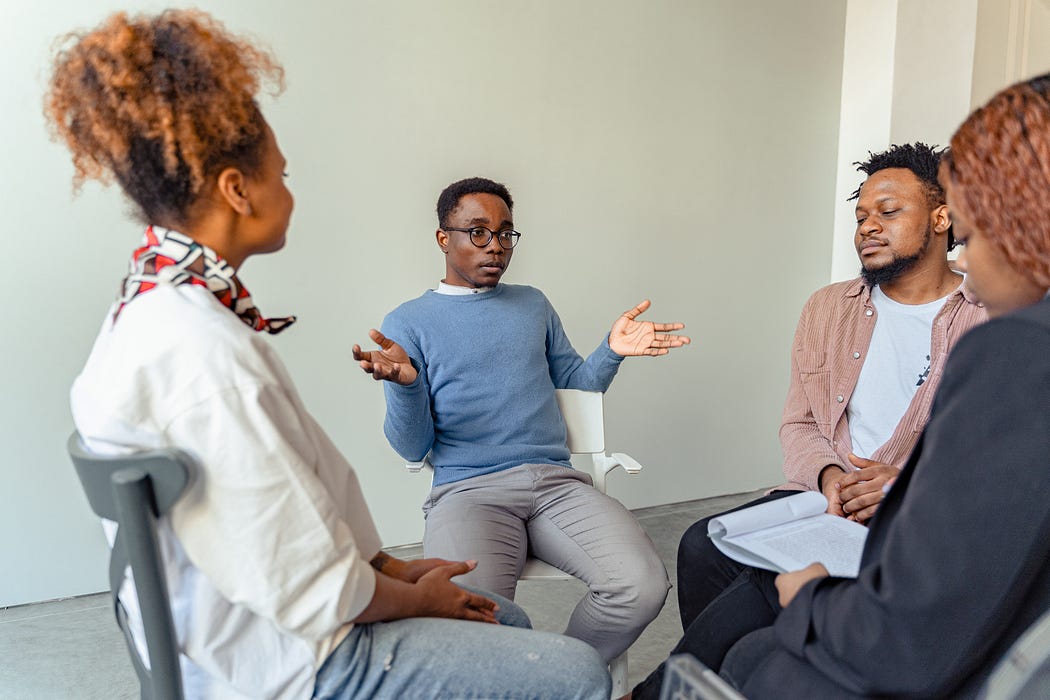There are no bad ideas: The science of validating good from bad ideas.
 Emmanuel Muthui
Emmanuel MuthuiPublic Service Announcement: Ladies and Gentlemen, let's take a minute of silence for all the ‘bad’ ideas we buried and all the ‘good’ ones that never materialized. And a toast to all the bad ideas that became a success and the good ones that turned out to be actually great ideas.
Before we get into details, let us get some basic definitions of an idea. According to Merriam-Webster, an idea can be defined as a formulated thought or opinion; a plan for action; an entity (such as a thought, concept, sensation, or image) actually or potentially present to consciousness; or an indefinite or unformed conception. You get the point. Learn more here.
We are always thinking of ideas and they come in all forms and shapes encompassing the many dimensions of our human life and existence. Some we may call realistic and doable, others as just delusions and unicorn stories (in Kenyan slang we call them ‘story za jaba’ meaning useless ideas/stories).

Photo by Nick Fewings on Unsplash
Ideas could be about anything. It could be an idea about how to start a new business, how to grow an existing one, how to find a new job, how to raise money, how to find a new hustle, how to plan for a birthday party, how to find a new partner, how to make your marriage work, how to be a better father/mother/wife/husband, and many other how to...(take a second and add your own).
We are always searching for something. Thinking about something. Desiring to do something. Good or bad. Big or small. Whatever it is, it always boils down to ideas. When you type “How to…” on Google or YouTube, you are most likely to find a lot (millions if not billions) of auto-fills suggested to you, relevant or not is just a matter of preference.
It is obvious that most times we want to start or do anything new or something we already know about but in a different way. The first step is usually to think. Now the ‘thinking’ is different for everyone. Some prefer to go on a run, some will put on some soft or loud music and just allow their brains to spit all sorts of ideas, some will go for meditation, others for a road trip, a solo coffee date, the kitchen, the office, the bedroom…the list is endless. We are always in search of something novel; something golden but hidden in the crevices of our experiences, desires, inspirations, and aspirations. Our brain is the key.

Photo by Frederick Medina on Unsplash
We think and think, randomly or intentionally, sometimes we write down the thoughts, sometimes we hold the ideas in our head (taking chances with our brain memory), sometimes we share them with people we can trust, and sometimes we assume they are too obvious or just too complicated, to begin with, and forget about them entirely. I found this resource on developing ideas very helpful, check it out.
Now that we know what an idea is, how we generate it, and how each person might deal with this outflow of varying ideas, it is time to go into the specifics of identifying and validating good from bad ideas. “But wait, you just said there are no bad ideas” you might declaim. Yes, there are no bad ideas but there is a scientific method of validating the quality of your ideas. Let’s jump right into it.
Four Stages/Levels of Idea Validation
There are four types, or levels, of idea validation methods: Assessment, Fact Finding, Tests, and Experiments.
Stage 1: Assessment

Photo by Antoni Shkraba: https://www.pexels.com/photo/people-in-a-psychotherapy-session-7579310/
This is the starting point. Here, you intentionally determine if an idea is worth pursuing at this time without any external research, or enough facts or data to prove its worth. There is little evidence at this stage and all you have is just an idea. Using the following techniques can help us filter out, and evaluate an idea objectively and in a structured manner.
Goals alignment: Review if the idea is helping you achieve any of your goals (personal or organizational). If there is no goal alignment, then keep it aside, and maintain your focus. If the idea holds some water, think if changing your goals makes any sense.
Initial ICE analysis: This is a scoring technique (or a smart guessing technique) for ideas based on their potential Impact, Ease (freedom from difficulty and effort), and Confidence (available evidence that the idea will/might make an impact) using knowledge from our own experience or some rough calculations. Learn more about ICE and Confidence meter/calculator here by Itamar Gilad.
Assumption Mapping: This is a popular brainstorming technique to identify any hidden assumptions and risks within your idea/ideas. Find a team (if you have none) or someone or people that you find knowledgeable and have an open discussion about your ideas. You have no idea what interesting POVs you could get out of such.
Stakeholder review: This is good for a business-oriented idea(s). Engaging key stakeholders (internal or external) might help you review the quality of your idea. They may not be able to tell if it is a good or a bad idea, (even though they could try) but their input could help you identify potential risks (legal, brand, PR, etc), and provide feedback on how to improve, change, or mitigate any potential risks including the kind of evidence to look for when assessing how big or small the risks are.
Business Modeling: In a business or organizational setup, the question of how good or bad an idea is, comes down to how financially risky or rewarding the execution of the idea is to the business/organization and its shareholders. Using a simple cost/revenue projection Excel sheet, a business canvas, or any other financial analysis technique can be a great starting point to estimate the financial implications of the idea.
Stage 2: Fact-Finding

Photo by Tima Miroshnichenko: https://www.pexels.com/photo/college-students-studying-in-a-library-9572688/
This is the second stage of an idea. After assessing it, it is now time to look for available facts and data that either support or disapprove of it. In short, it's time to do some research (you can learn more about Research methodologies here). The following are fact-finding techniques you can apply in your idea validation journey.
Google: I call him ‘Uncle Google’, he has almost all the answers wrapped in many envelopes called websites. The goal here is to find as much data as you can and use it to validate the idea. Questions to answer could be something like; has this been done before? Yes or No. If Yes, how did they do it? Does it work? If No, can it be done? What data supports its practicability? How far can I go? What do I need to make it work? etcetera etcetera. The bottom line is, Just Google it (remember Nike’s tagline: Just Do it)
Surveys: This is a great research technique that could provide you answers both qualitative and quantitative. It is much cheaper and quick compared to other research techniques. How do you do it? Well, you could easily use resources like Google Forms to create a survey form and share it with friends, work colleagues, and even family via WhatsApp, Telegram, and Instagram. Sounds easy, right? If you are somehow sophisticated, you could use website surveys, email surveys, or any other third-party service.
Word of caution: This method has some potential risks including sampling bias (meaning that some members of the population are systematically more likely to be selected in a sample than others), misinterpretation of questions, and not-genuine/honest responses, among other problems.
- Interviews: Having one-on-one conversations with people is a great way to learn diverse points of view on a problem you want to solve. Any idea has a need it addresses, whether it's just yours, or other people's. Speaking to potential users, beneficiaries, or just knowledgeable folks, could open some portals of information and expose your knowledge gaps that could turn helpful in your journey to execution. A classic example is its application in business cases, where interviews with potential users and customers, set up an incredible opportunity to learn more about their needs or problems, what they use now, and what they think about your idea. This could be done via scheduled calls, scheduled interviews, pre/post sales meetings, hallway chats in a conference, or random street interviews. Targeting the right interviewees is the magic of getting the right feedback.
Interviews give us rich qualitative information — they tell us why people do what they do, what’s their thought processes are, what they desire and fear. Itamar Gilad
Field Research: Going to the field and actively observing users in their natural settings — work, home, field — can provide insights, context, and reasoning behind their actions. This creates a deeper understanding of their problems and needs, and how your idea could potentially be customized to meet their needs and expectations while not entirely disrupting their daily lives.
Data Analysis: If you have access to some data, analyzing it can give you hints into key facts and realities of the problem your idea solves and how possible it is for the idea to work. Data sources must be as relevant as possible and findings must be relative to your target audience. Violate this rule, and you will likely draw very wrong inferences.
Competitor Analysis: In a business or any other competitive environment, it is very necessary to look at what your competitors are doing. Well, this may not entirely inform if an idea is good or not but could highlight if your competitors are finding the same problem worth solving. Most importantly, it will show you if there are any real users for the solutions you might think of, and what they (users) think about these solutions.
Stage 3: Testing

Photo by LinkedIn Sales Navigator: https://www.pexels.com/photo/man-pointing-laptop-computer-2182981/
If you have completed the first two stages of this process, you are now ready for the third step. Testing your idea literally means putting your ideas to the test; taking a version of your idea (could be a physical product or a service) in front of your potential users or customers and measuring their reaction. The goal could either be to learn if the idea works or not, OR to test a hypothesis which means we have clearly set metrics/criteria of what success or failure means to us.
A hypotheis is an assumption or concession made for the sake of argument; an interpretation of a practical situation or condition taken as the ground for action; it is a tentative assumption made in order to draw out and test its logical or empirical consequences.
Watch out for part 2 to find the final part of this article.
Thank you for reading. I will see you in the next one!
Subscribe to my newsletter
Read articles from Emmanuel Muthui directly inside your inbox. Subscribe to the newsletter, and don't miss out.
Written by
